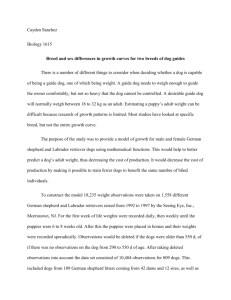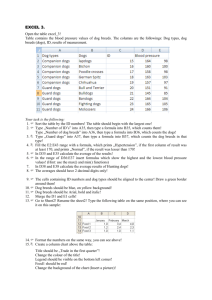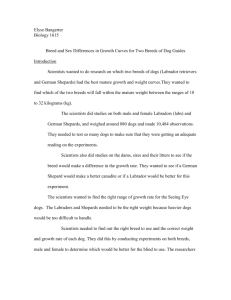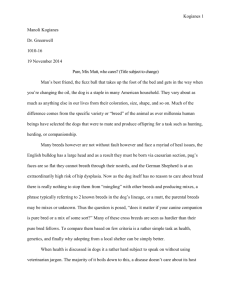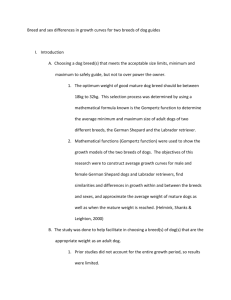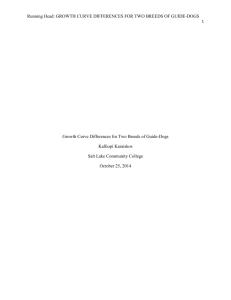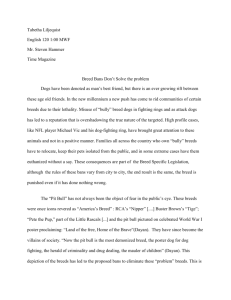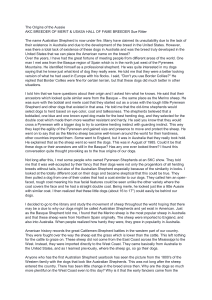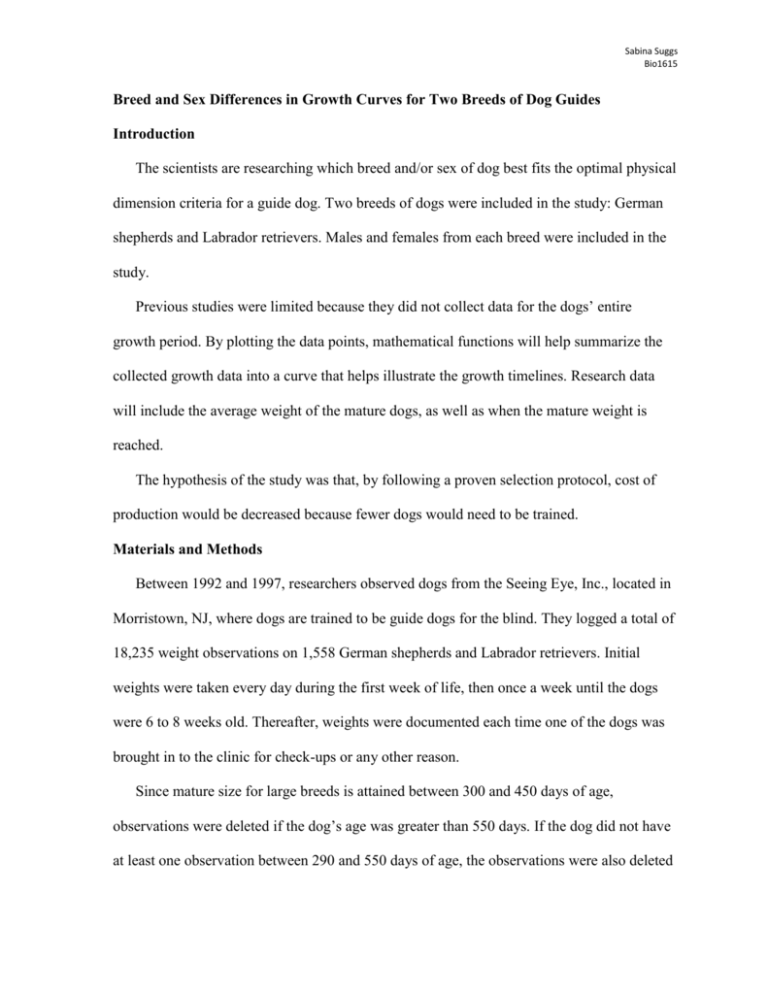
Sabina Suggs
Bio1615
Breed and Sex Differences in Growth Curves for Two Breeds of Dog Guides
Introduction
The scientists are researching which breed and/or sex of dog best fits the optimal physical
dimension criteria for a guide dog. Two breeds of dogs were included in the study: German
shepherds and Labrador retrievers. Males and females from each breed were included in the
study.
Previous studies were limited because they did not collect data for the dogs’ entire
growth period. By plotting the data points, mathematical functions will help summarize the
collected growth data into a curve that helps illustrate the growth timelines. Research data
will include the average weight of the mature dogs, as well as when the mature weight is
reached.
The hypothesis of the study was that, by following a proven selection protocol, cost of
production would be decreased because fewer dogs would need to be trained.
Materials and Methods
Between 1992 and 1997, researchers observed dogs from the Seeing Eye, Inc., located in
Morristown, NJ, where dogs are trained to be guide dogs for the blind. They logged a total of
18,235 weight observations on 1,558 German shepherds and Labrador retrievers. Initial
weights were taken every day during the first week of life, then once a week until the dogs
were 6 to 8 weeks old. Thereafter, weights were documented each time one of the dogs was
brought in to the clinic for check-ups or any other reason.
Since mature size for large breeds is attained between 300 and 450 days of age,
observations were deleted if the dog’s age was greater than 550 days. If the dog did not have
at least one observation between 290 and 550 days of age, the observations were also deleted
Sabina Suggs
Bio1615
because the study required data to be collected throughout the growth cycle in order to fit the
growth model.
The Gompertz function was the selected to use as the mathematical tool. The form of the
equation used in the study to model growth of individual dogs was: Wt = Wmaxexp{-e[-(t-c)/bj]}.
Wt = weight at time t, Wmax = mature body weight, b = proportional to duration of growth, c=
age at point of inflection, and t = age in days. Duration of growth was estimated by 4b+c.
Results
The mature weight for Labrador retrievers was 2.1 to 2.5 kg higher than German
shepherds. Males were 4.5 to 4.9 kg heavier than females (Breed x Sex was not significant).
The duration of growth was 3 to 13 days greater for males than for females (Breed x Sex was
not significant). Males’ point of inflection was 2.4 to 4.8 days greater than for females (Breed
x Sex was not significant).
Discussion
Due to the differences between males and females, it was important to separate the sexes
within the breeds when studying growth. Although the male Labrador retrievers have a
higher risk of exceeding the acceptable weight, their temperament and trainability as seeingeye dogs have positives that shouldn’t be overlooked.
Some limitations to the study could include: (1) Some of the dogs’ weight varied from
when they were with a caretaker and then returning to the facility, and vice versa; (2) Many
observations were taken while the dogs were with caretakers; (3) Not as many observations
were taken between 61 and 332 days of age. More data could change the results and increase
the overall accuracy of the study.
Sabina Suggs
Bio1615
Bibliography
Helmink, S.K., Shanks, R.D., Leighton, E.A. 2000. Breed and sex differences in growth
curves for two breeds of dog guides. J. Anim. Sci. 78:27-32.




